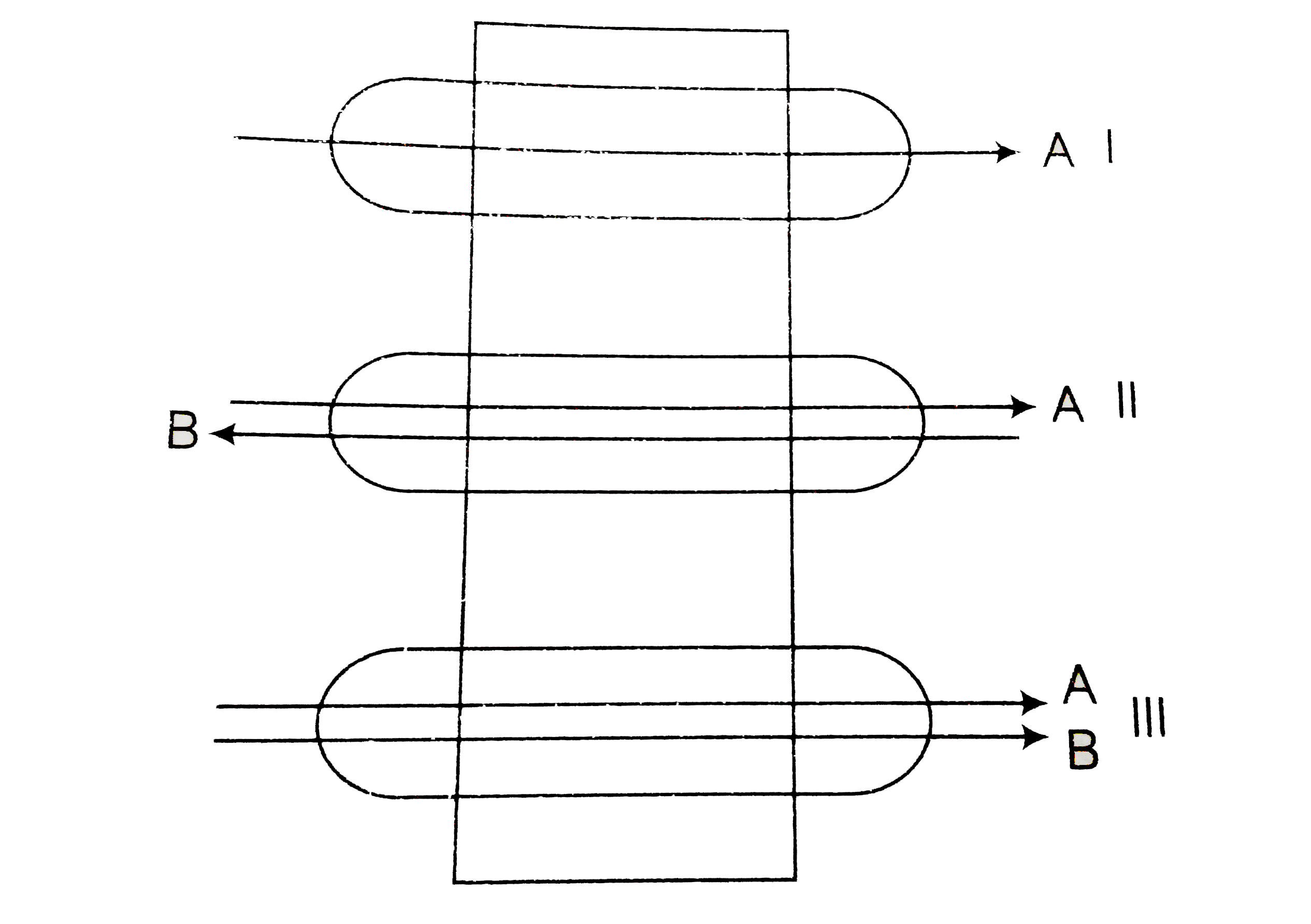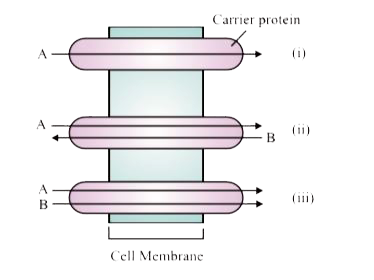Indentify the process occurring in I, II, and III

Video Solution
Text Solution
I. Uniport In this process, there is movemnt of a molecule across a membrane, i.e., of other molecules.
II. Antiport In this process, there is a movement of two types of molecule in opposite direction.
III. Symport In this process, there is a movement of more than one molecule across the membrane in the same direction, at one time.
|
Topper's Solved these Questions
- TRANSPORT IN PLANTSBOOK - NCERT EXEMPLARCHAPTER - TRANSPORT IN PLANTSEXERCISE - Short Answer Type Questions
25 Videos
- TRANSPORT IN PLANTSBOOK - NCERT EXEMPLARCHAPTER - TRANSPORT IN PLANTSEXERCISE - Long Answer Type Questions
7 Videos
- TRANSPORT IN PLANTSBOOK - NCERT EXEMPLARCHAPTER - TRANSPORT IN PLANTSEXERCISE - Long Answer Type Questions
7 Videos
- THE LIVING WORLDBOOK - NCERT EXEMPLARCHAPTER - THE LIVING WORLDEXERCISE - Long Answer Type Questions
10 Videos
Similar Questions
Knowledge Check
See the following diagram and identify the process occurring in I, II and III
 A{:( I, II, III),(Uniport, Anitport, Symport):}B{:( I, II, III),(Symport, Co port, Antiport):}C{:( I, II, III),(Anitport, Uniport, Symport):}D{:( I, II, III),(Co port, Symport, Antiport):}
A{:( I, II, III),(Uniport, Anitport, Symport):}B{:( I, II, III),(Symport, Co port, Antiport):}C{:( I, II, III),(Anitport, Uniport, Symport):}D{:( I, II, III),(Co port, Symport, Antiport):}
The basicity order of I, II and III isAIIIgtIgtIIBIgtIIgtIIICIIIgtIIgtIDIIgtIIIgtIMathc the culumn I,II and III
 A(A-ii-S)(B-iii-R)(C-i-Q)(D-iv-P)B(A-iv-P)(B-i-Q)(C-ii-R)(D-ii-S)C(A-iv-P)(B-iii-R)(C-i-S)(D-ii-R)D(A-iii-R)(B-i-Q)(C-iv-P)(D-ii-S)
A(A-ii-S)(B-iii-R)(C-i-Q)(D-iv-P)B(A-iv-P)(B-i-Q)(C-ii-R)(D-ii-S)C(A-iv-P)(B-iii-R)(C-i-S)(D-ii-R)D(A-iii-R)(B-i-Q)(C-iv-P)(D-ii-S)
(a) Observe the given figure and give the answers of the following :-

(a) Identify the process occurring in (I), (II) and (III).
(b) Differentiate between the process II and III.
(c) How many types of aquaporins from the water channels in the cell membrane.
View SolutionMatch the column I, II and III

View SolutionIndentify the following ions by a simple test forming complex compound :
(i) Cu2+ (ii) Ni2+ (iii) Fe3+ (iv) Co2+
View SolutionIndentify the areas labelled (i), (ii), (iii) and (iv) in the pie chart given below representing the biodiversity of plants showing their proportionate number of species of major taxa.

View SolutionMatch the following figures I,andIIandIII
(I) Hypogynous
(II) Perigynous flower
(III) Epigynous flower

View Solution


